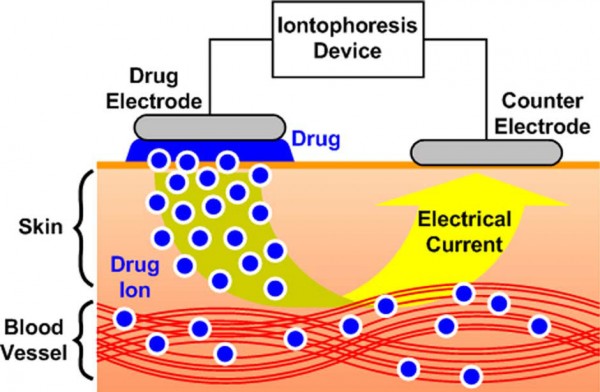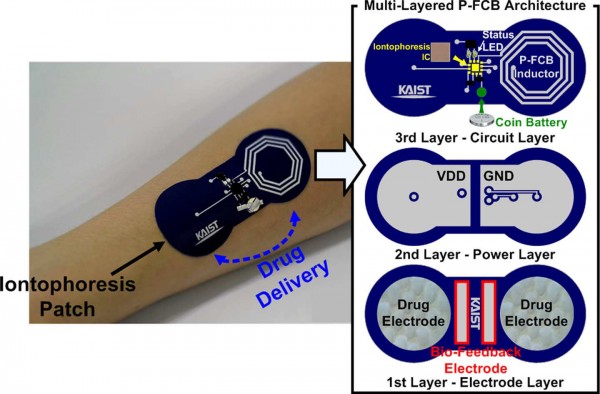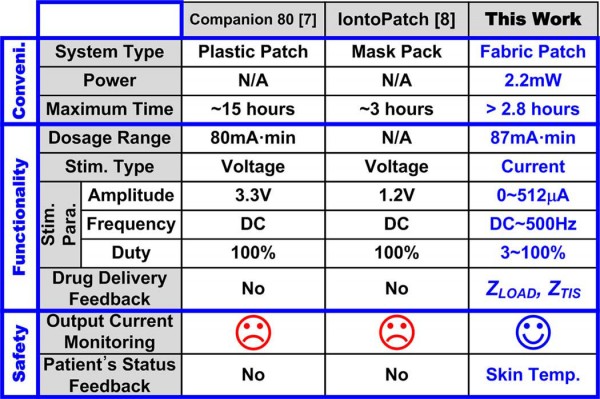Smart Drug Delivery
본문
Overview
For the administration of drugs, oral and needle-based methods have been universally used to date. However, these methods result in various unwanted side effects, such as hepatic first-pass effect, infection, and pain. To avoid these side effects, a transdermal drug delivery method represents an attractive alternative to oral delivery and hypodermic injection. Transdermal drug delivery is a noninvasive technique which delivers the drug into the body tissue through the skin. In transdermal drug delivery, the most difficult challenge is how to efficiently increase and accurately control the amount of drug delivered. To overcome these challenges, iontophoresis uses a weak electrical current (1 mA) to enhance and control the drug penetration into the body tissue.
A bio-feedback iontophoresis controller IC is implemented into a fabric patch for transdermal drug delivery. An iontophoresis stimulator front-end (ISFE) can provide programmable stimulation current in the range of 16-512 μA amplitude, DC-500-Hz frequency, and 3% -100% duty cycle for controllable drug delivery. For safe and robust electrical stimulation, a failure detection circuit monitors the stimulation current to prevent overcurrent and stimulation voltage saturation. For bio-feedback operation, a dual-mode impedance sensor (DMIS) measures load and tissue impedances in the range of 5-50 kΩ and 5Ω-1kΩ, respectively. In the DMIS, the gain of a programmable gain amplifier and the injected current level of a chopper-modulated current source are automatically controlled to minimize power consumption. The proposed IC occupies 2.35 mm X 2.35 mm including pads in a 0.11 μm 1P6M CMOS technology and dissipates a peak power of 2.2 mW. The proposed IC is directly integrated on a 9 cm X 4 cm fabric circuit board together with a 6.2-mAh coin battery for convenient iontophoresis treatment. The proposed system provides a maximum dosage range of 87 mA*min, which is larger range than the 80-mA*min dosage range of a commercial iontophoresis patch. Using a reconfigurable tetra-polar electrode configuration, load and tissue impedances are measured during the iontophoresis treatment to provide bio-feedback. The proposed iontophoresis system is successfully verified by both in-vitro and in-vivo tests.






